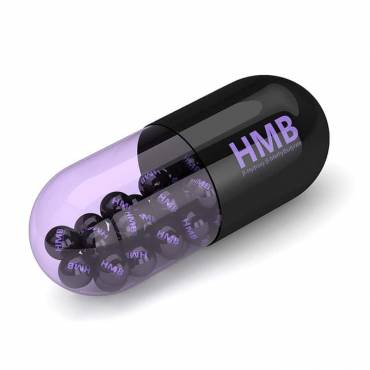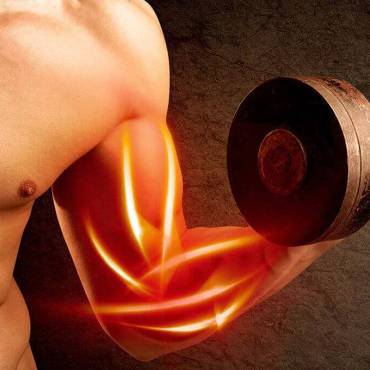Beef Protein (Isolate) Powder
Collagen or Gelatin?
by Dr. Moody NW and Dr. Allan Bacon
We all enjoy romanticizing the idea that beef protein isolate is filet mignon ground into powder, but that is far from the truth. The price of sourcing beef for this purpose would be exorbitant, making this cost prohibitive. A quick internet search shows that the top 5 selling beef protein products contain the following ingredients: hydrolyzed beef protein isolate and hydrolyzed gelatin. Now these sound fancy, but what exactly are they? Hydrolyzed Beef Protein Isolate is also known as Collagen. Collagen/gelatin are not high quality protein sources when the goal is muscle repair; they are particularly low in leucine and are high in glycine, proline, arginine, and hydroxyproline.
Below is an amino acid breakdown of an unnamed whey protein product vs. an unnamed beef protein product vs. gelatin:

The first thing you should notice are the direct similarities between the compositions of beef protein isolate/collagen and gelatin. They are nearly identical. For our purposes, we can assume the effects of beef protein isolate, collagen, and gelatin are similar, and will be used interchangeably.
Whey protein has far more of the essential amino acids and BCAAs (34.96 grams in whey vs. 19.4 grams in beef protein isolate per 100 g). The amount of essential amino acids and BCAAs are of utmost importance when we considering different sources of protein as athletes. These are the amino acids that aid in recovery, muscle protein synthesis, etc. Collagen/beef protein isolate supplementation has also shown to yield less lean body mass when compared to whey.(6)
Another massive difference is the amount of glycine in beef protein (beef protein isolate contains 20.1 grams of glycine, more than 14 times the amount of glycine in whey protein). Glycine appears on lab tests and nutrition labels as intact whole protein since labeling laws identify protein as nitrogenous containing species, regardless of amino composition. Unfortunately this means protein numbers are not necessarily equivalent in quality as listed on a nutrition label. This allows companies to pad the protein number on the label at reduced cost. Consider companies that often have buy 1 get 1’s on their protein powders, and you will notice glycine is almost always added into their protein matrix (or even more alarming, sometimes it doesn’t appear on the label even though it is actually in the product). This is concerning as research shows adding almost 15g of glycine (the main constituent of collagen/gelatin) to a resistance training regimen did not increase muscle growth when compared to an isonitrogenous mixture.(7) This suggests glycine itself is not a driving factor in muscle growth, and therefore supplementation of collagen/gelatin is unlikely to be a significant lean muscle builder. Bolstering this finding, an additional 15 g/day collagen protein per day did not yield increases in muscle fiber cross section in recreationally active men, although there was a trend for enhanced passive connective tissue adaptations.(8)
The following is a comparison of the various protein sources we have been discussing using the Protein Digestibility Corrected Amino Acid Score (PDCAAS). The PDCAAS is a method utilized by the FDA and the World Health Organization to measure the quality of protein based on the amino acid requirements of humans and their ability to digest these protein sources.(2) A value of 1.00 is the highest possible PDCAAS score.

As previously discussed, most of the beef protein powders on the market contain mainly collagen and gelatin, thus they have a PDCAAS of zero. These products are not beneficial for athletes for skeletal muscle growth/repair. On the other hand, research shows that blends of casein and whey protein are very high quality sources of protein for athletes. Both protein sources have a PDCAAS of 1.00, the highest possible score. These proteins will aid in recovery, increase the rates of muscle protein synthesis, etc. If for some reason you are avoiding dairy sourced protein and soy, an alternative is a combination of both rice protein and pea protein. Research shows that the effects of rice protein are similar to that of whey protein.(5) Rice and pea protein may work well in combination because rice protein is deficient in lysine, but pea protein is not, while pea protein is deficient in cysteine, but rice protein is not. Therefore they potentially end up complementing each other.
For more information regarding collagen and overall health benefits, check out our micro-article on the subject.

References
1. Eastoe, J.E. (1955). The amino acid composition of mammalian collagen and gelatin. The Biochemical journal, 61(4), 589-600.
2. Recent developments in protein quality evaluation
3. Schaafsma, G. (2000). The protein digestibility-corrected amino acid score. The Journal of nutrition, 130(7), 1865S-7S.
4. http://cancersupplementcenter.com/PD…r-01-28-08.pdf
5. Joy, J. M., Lowery, R. P., Wilson, J. M., Purpura, M., De Souza, E. O., Wilson, S. M., Kalman, D. S., et al. (2013). The effects of 8 weeks of whey or rice protein supplementation on body composition and exercise performance. Nutrition journal, 12(1), 86.
6. J Am Diet Assoc. 2009 Jun;109(6):1082-7. doi: 10.1016/j.jada.2009.03.003.
7. Jason E. Tang, Paul J. Lysecki, Joshua J. Manolakos, Maureen J. MacDonald, Mark A. Tarnopolsky, Stuart M. Phillips, Bolus Arginine Supplementation Affects neither Muscle Blood Flow nor Muscle Protein Synthesis in Young Men at Rest or After Resistance Exercise, The Journal of Nutrition, Volume 141, Issue 2, February 2011, Pages 195–200, https://doi.org/10.3945/jn.110.130138
8. https://doi.org/10.3390/nu11051154






